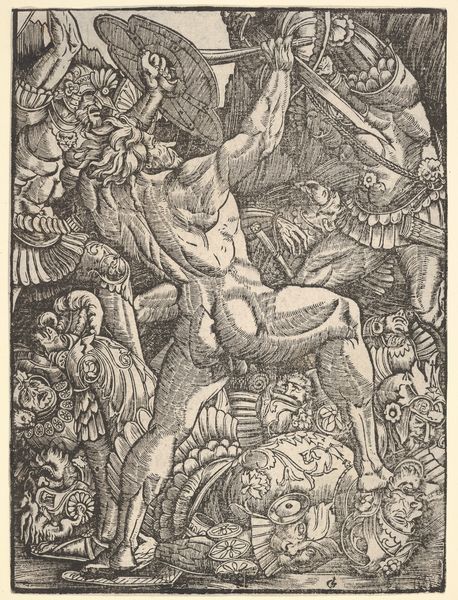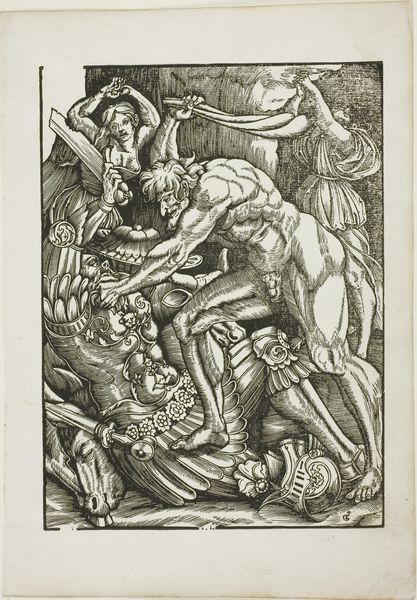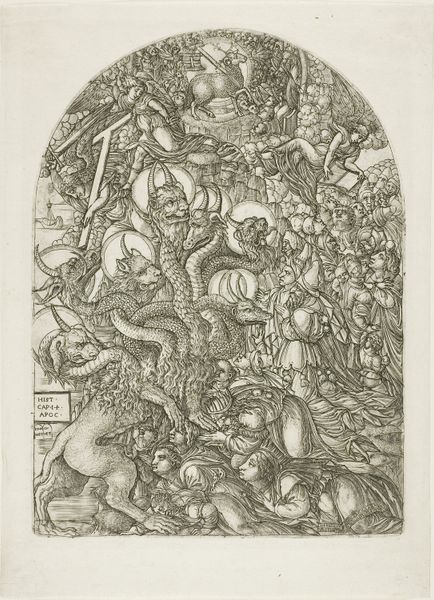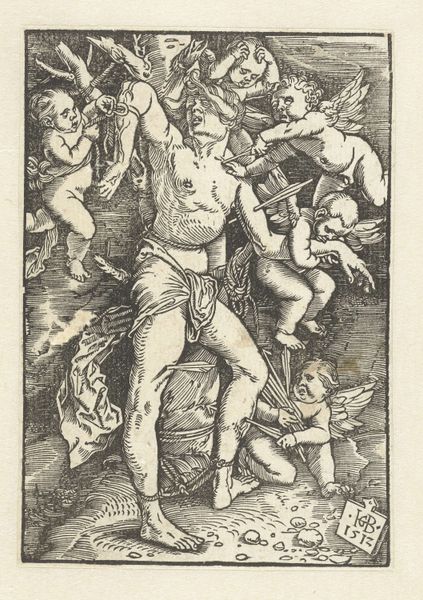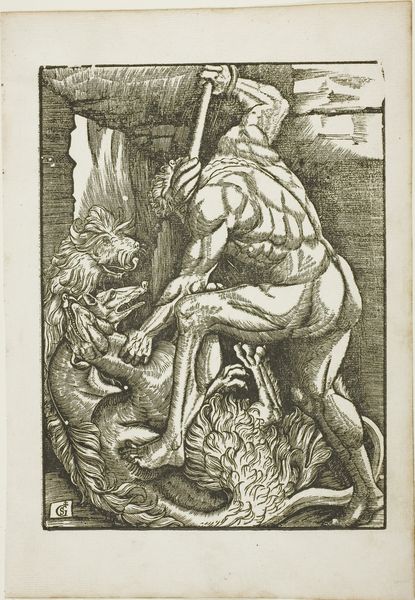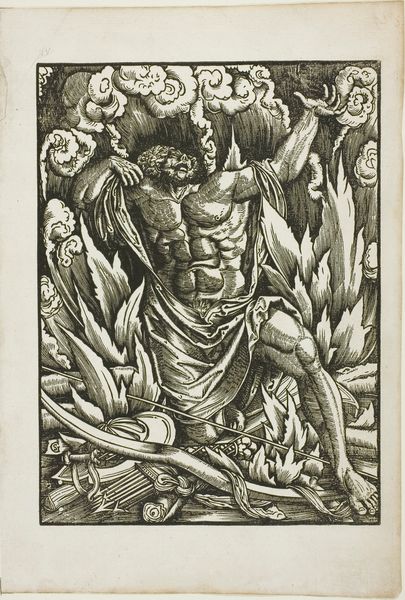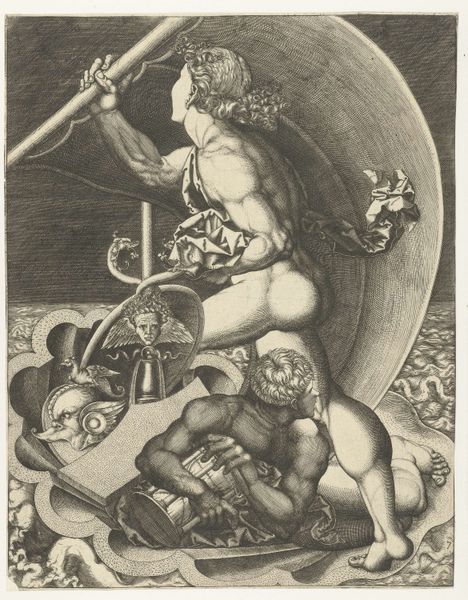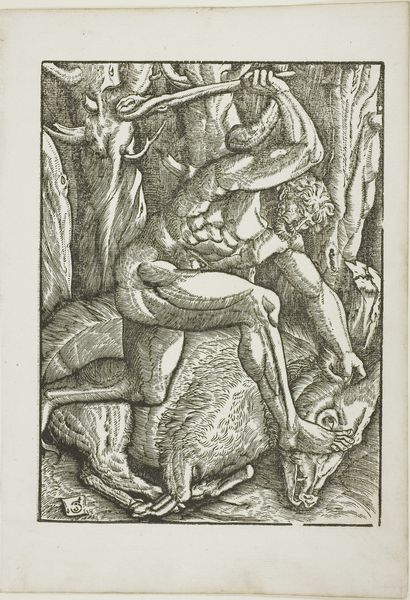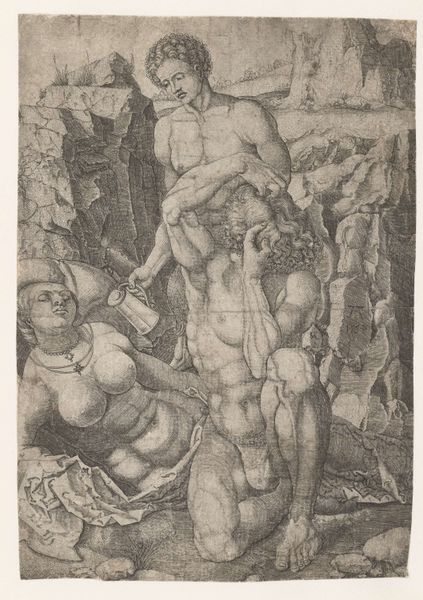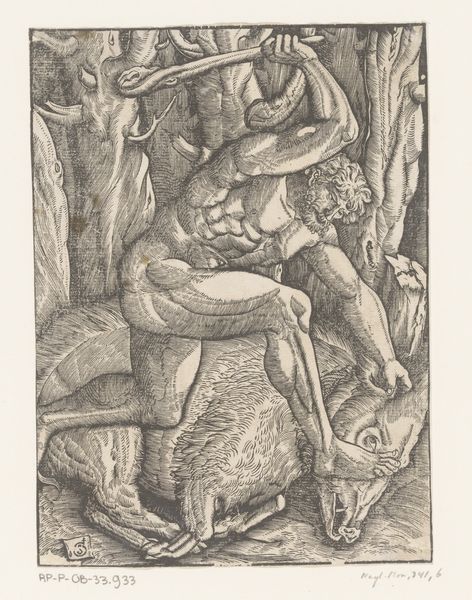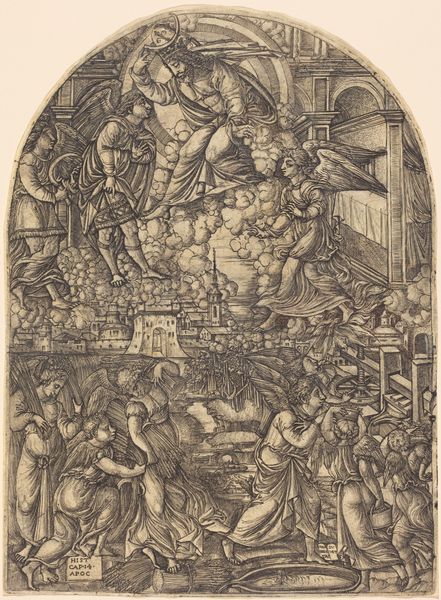
Hercules and the Giants, from Scenes from the Life of Hercules c. 1528
0:00
0:00
drawing, carving, print, paper, engraving
#
drawing
#
carving
# print
#
figuration
#
paper
#
11_renaissance
#
france
#
history-painting
#
italian-renaissance
#
engraving
Dimensions: 198 × 147 mm (image/plate); 252 × 173 mm (sheet)
Copyright: Public Domain
Curator: This print, “Hercules and the Giants, from Scenes from the Life of Hercules,” was created around 1528. It’s an engraving. Editor: The immediate impression is of overwhelming chaos and muscular dynamism. The figure of Hercules practically bursts from the frame. Curator: Indeed. The composition is dense, almost claustrophobic, isn’t it? The artist packs the scene with writhing figures, creating a sense of struggle. It’s an engraving after a drawing style that emulates the monumentality typical of the Italian Renaissance, a style embraced by printmakers as they disseminated art across Europe. We find this work now at the Art Institute of Chicago. Editor: I think about how Hercules has been reinterpreted across time and cultures, often becoming a symbol of power imposed on marginalized people. Here, the giants almost feel like a collective resistance against an encroaching force. Curator: That’s a potent reading. Myth was often used as a proxy for contemporary political concerns. Considering the rise of powerful centralized states at the time, your suggestion rings true. But here is also that clear embrace of antiquity. Editor: Absolutely. Yet, the choice of this specific narrative raises questions for me about the very notion of heroism being propagated here, whose narratives get centered. Is it the champion’s strength, or who’s getting crushed under his foot? Curator: A valid question, as the violence of this scene can not be ignored. Prints played an outsized role in spreading the power of images and how narratives got cemented in popular understanding. Hercules standing astride one of the vanquished, almost dismissively. Editor: What's also intriguing is the graphic style, this dance between the clear articulation of muscle and limb versus these areas densely cross-hatched almost to illegibility. Curator: It adds to the feeling of turmoil, the blurring of the individual and the collective within the fight. Perhaps all the actors become just agents of historical momentum? Editor: Precisely. Reflecting on this print, I see how crucial it is to view classical tales not as simple celebrations of heroism, but as complex, loaded narratives, still speaking to contemporary issues of power, identity, and social upheaval. Curator: A needed perspective, underlining how artistic choices in prints like this actively shaped – and continue to shape – cultural memory and value systems.
Comments
No comments
Be the first to comment and join the conversation on the ultimate creative platform.
